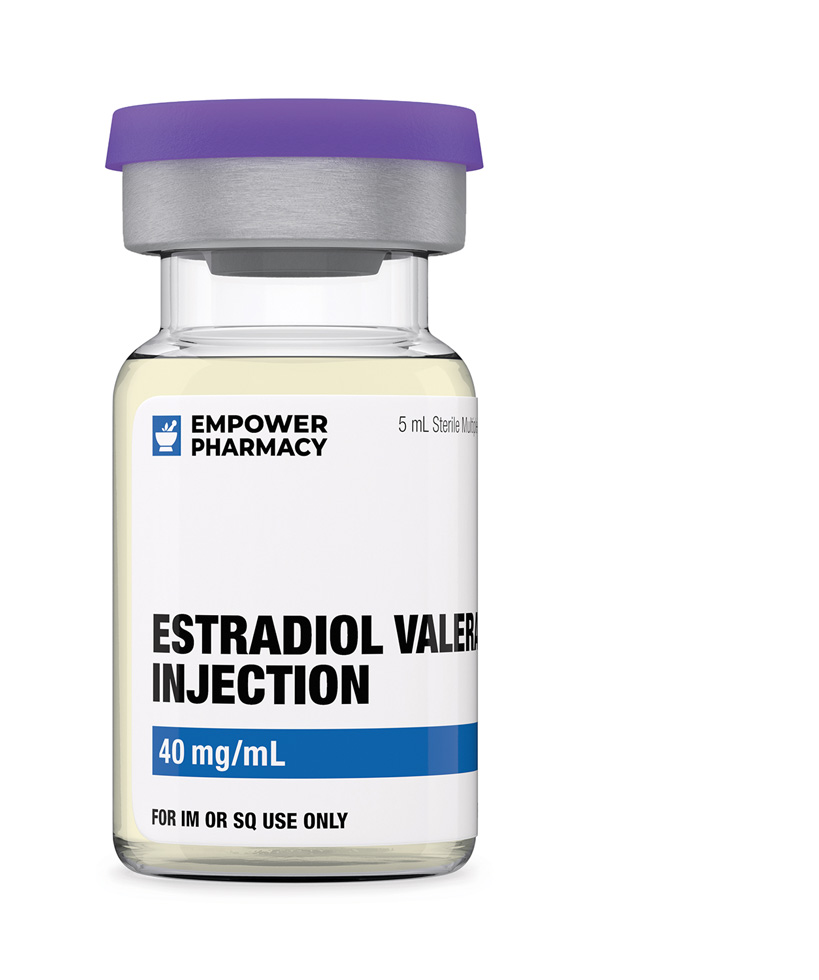Description
Estrogens are a group of female sex hormones produced primarily by the ovaries. They are also synthesized at non-gonadal sites including adipose tissue, adrenal glands, bone, liver, and brain.1 Structurally, they are a class of steroid hormones responsible for normal development and maintenance of the female reproductive system. At puberty, estrogens promote the development of female secondary sex characteristics including breast development, axillary and pubic hair growth, and maintenance of the estrous cycle. Estrogens also influence physiological pathways that contribute to the health of bones, the cardiovascular system, and the nervous system. 1
There are three types of estrogens in females – estradiol, estrone, and estriol. Of the three forms, E2 or 17β-estradiol is the most potent estrogen. Most importantly, estradiol is the principal estrogen in premenopausal women.1 Serum estradiol levels vary between 15-350 pg/mL in pre-menopausal women (depending on the stage of the menstrual cycle) and fall to <10 pg/mL in postmenopausal women.2 This decrease in hormone levels is responsible for vasomotor symptoms of menopause including hot flashes, night sweats, heart palpitations, and changes in blood pressure. Some women opt for hormone therapy to relieve vasomotor symptoms of menopause. Historically, estradiol derived from cow ovaries or from the urine of pregnant mares was used to treat menopausal symptoms. Eventually, the first synthetic estrogen derivative was approved by the US FDA in 1941.3 Since then, several FDA-approved medications containing estradiol or its synthetic derivatives are available as pills, transdermal patches, transdermal sprays, gels, topical creams, vaginal creams, vaginal inserts, vaginal rings, vaginal tablets, and intramuscular injections.4 There is no evidence to show that bioidentical hormones or estrogens derived from natural sources are safer or more efficacious than synthetic estrogens.3 Estradiol valerate is the synthetic esterified pro-drug of estradiol. Inside the body, this pro-drug is cleaved into 17β-estradiol and a fatty acid. Therefore, its biological effects are no different from endogenously circulating estradiol. Esterification provides the benefits of improved drug bioavailability following oral administration, enhanced lipophilicity, and sustained release of estradiol after intramuscular depot injection.5 Estradiol valerate injection is indicated for the treatment of moderate to severe vasomotor symptoms as well as vulvar or vaginal atrophy associated with menopause. It can also be used to treat hypoestrogenism that occurs as a result of castration or primary ovarian failure. In men, it is indicated for palliative treatment of advanced androgen-dependent prostate cancer.6 Estrogen therapy is associated with increased risk of cardiovascular disorders including myocardial infarction, stroke, and venous thromboembolism. Long-term estrogen therapy is also associated with an increased risk of endometrial, breast, and ovarian cancer.






Reviews
There are no reviews yet.